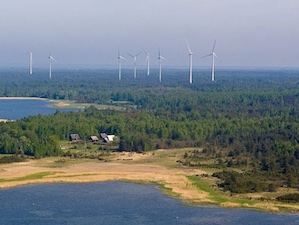Margus Vals, Member of the Management Board of Eesti Energia, emphasized that when completed, the offshore wind farm would generate 4 TWh of green energy per year, covering up to half of Estonia's annual energy consumption. This will significantly lower the average annual electricity price and accelerate Estonia's transition to other innovative technologies and energy storage options, such as hydrogen. In developing the Liivi project, Eesti Energia has set a goal that the offshore wind farm be completed before 2030.
“Estonia and the Baltics urgently need new renewable energy production capacities in order to alleviate the electricity deficit and fully switch to renewable electricity faster. The advantage of an offshore wind farm is a large production volume and better wind conditions. The environmental impact assessment provides answers as to whether and how to implement this much-needed investment in a cleaner future in the way that has the least impact on the living environment,” said Margus Vals, Member of the Management Board of Eesti Energia.
The environmental impact assessment will include environmental studies to assess the potential significant environmental effects and cumulative effects of the proposed activity, and will set out the measures to prevent and mitigate the significant negative environmental effects associated with the construction of the wind farm.
Hendrik Puhkim, Member of the Management Board of Skepast&Puhkim, Estonia's leading infrastructure, planning and environmental consulting company, said that they were pleased to apply their experience in assessing the environmental impact of the first offshore wind farm in the Baltic region. “Internationally, offshore wind farms have been established for decades and we are fully committed to applying this experience in assessing the environmental impact of Estonia's first offshore wind farm,” Puhkim added.
Eesti Energia and Skepast&Puhkim have set the principle of cooperating closely with local governments and experts at all stages of the work. As a next step, the companies will introduce the details related to the environmental impact assessment to the representatives of the local governments in the vicinity of the wind farm at Kihnu and Häädemeeste.
Eesti Energia is the leading wind energy producer in the Baltic States. Wind energy, including the implementation of offshore wind development projects, supports the strategy of Eesti Energia to gradually switch to carbon-neutral electricity production.
The goal of the energy group is to help customers plan and implement the green revolution. The company is convinced that the use of electricity generated from renewable sources in various sectors of the economy is the fastest way to reduce the carbon footprint.


